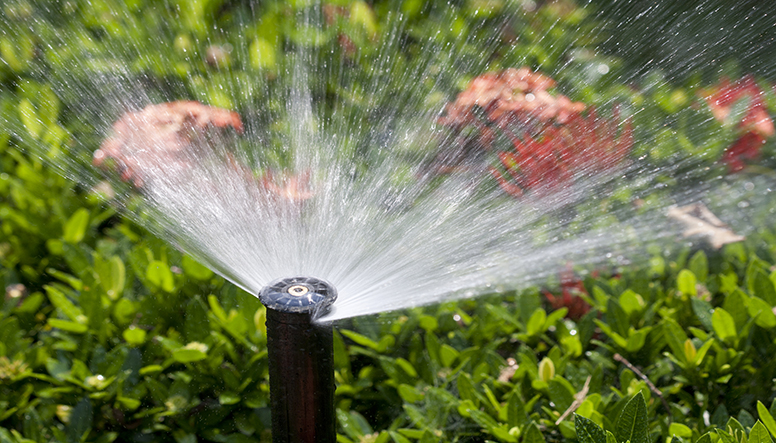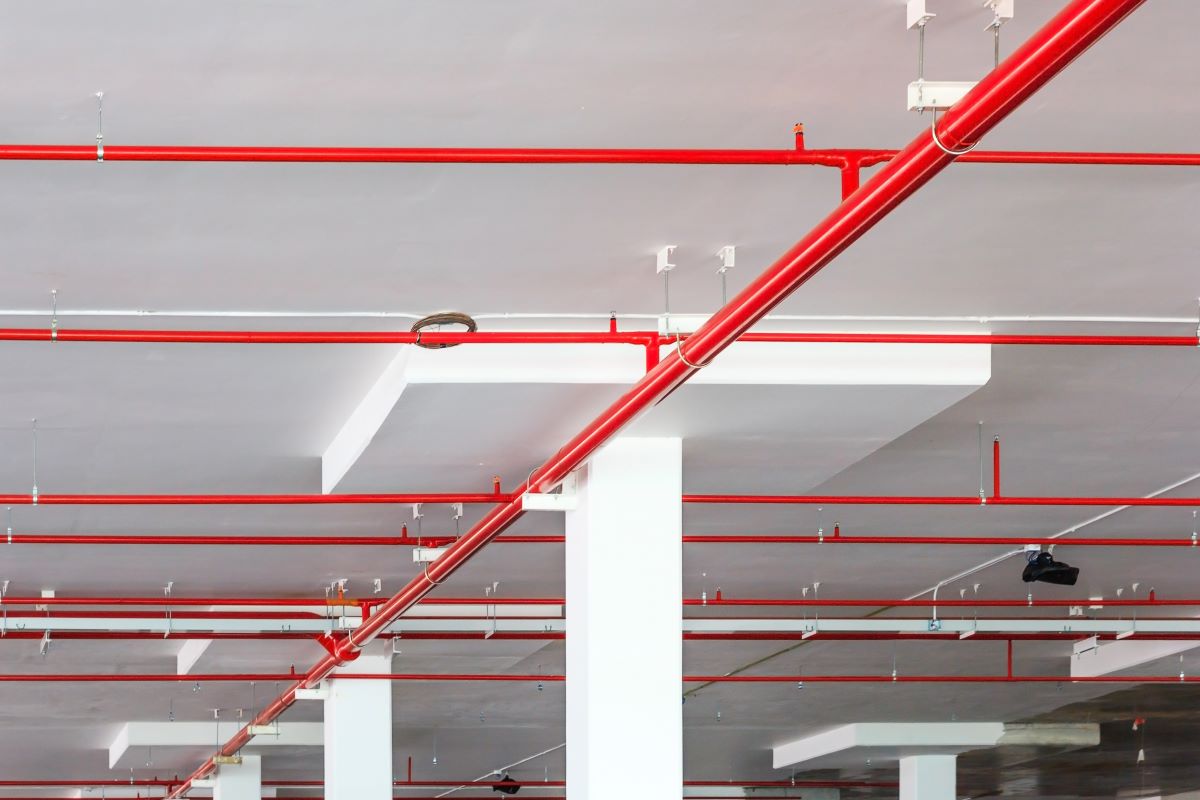Exploring one of the most Usual Problems in Lawn Sprinkler Equipments and Their Repair works
Automatic sprinkler are crucial for preserving healthy landscapes, yet they often run into different troubles. Common issues include blocked nozzles, broken pipes, and unequal watering patterns. Each of these can markedly influence system performance and water performance. Recognizing these problems and their solutions is important for any kind of homeowner. The adhering to areas will outline typical difficulties and the necessary repairs to maintain a lawn sprinkler system functioning at its finest. What comes next may stun those not really prepared for upkeep facts.
Clogged Nozzles and Lawn Sprinkler Heads
Clogged up nozzles and lawn sprinkler heads are common issues that can considerably prevent the performance of a lawn sprinkler. With time, debris such as dust, algae, and mineral buildup can accumulate, obstructing water circulation and resulting in unequal coverage in the grass or garden. This can result in particular locations getting insufficient water, while others might end up being over-saturated.
Routine maintenance is critical to avoid these obstructions. Routine checks can identify any type of blockages, and cleaning can often be completed with straightforward tools like a small brush or a toothpick. In many cases, soaking clogged parts in vinegar can help dissolve natural resource.
For severe clogs, replacement of the nozzle or head might be essential to restore correct feature. Addressing these problems immediately guarantees that the lawn sprinkler operates effectively, keeping a healthy and balanced landscape and optimizing water use.
Broken Pipeline and Leaks
Busted pipelines and leakages can substantially disrupt the capability of a sprinkler system. Determining pipeline damage very early is essential to stop additional difficulties, and recognizing repair work strategies can simplify the procedure. Furthermore, carrying out preventative maintenance suggestions can assist assure the durability of the system and reduce the probability of future issues.
Identifying Pipe Damage
How can home owners efficiently determine pipeline damages in their automatic sprinkler? To begin, they need to consistently inspect their backyards for unusual damp spots or pooling water, which might show a leak. Furthermore, property owners can check their water costs for inexplicable rises, suggesting surprise leaks within the system. Observing the lawn sprinkler heads for uneven spray patterns or not enough insurance coverage can additionally indicate prospective pipeline issues. Listening for uncommon noises, such as gurgling or hissing, may indicate air escaping from damaged pipelines. Finally, carrying out aesthetic inspections of revealed pipelines for cracks or rust can aid identify problems. By using these methods, home owners can proactively identify and attend to pipeline damage in their sprinkler systems before it brings about extra considerable concerns.
Repair Service Techniques Introduction
Dealing with pipeline damage in a lawn sprinkler system requires an organized method to repair services, particularly when managing breaks and leaks. The primary step often entails situating the damaged location, which can be accomplished via aesthetic inspection or stress testing. Once identified, the repair service technique may vary; for little leaks, making use of pipe sealant or epoxy can properly secure the affected section. In instances of significant breaks, removing the harmed pipe segment and replacing it with brand-new piping, protected with appropriate ports, is a good idea. Furthermore, making sure appropriate positioning and safeguarding joints will certainly aid stop future problems. After repair services, detailed screening of the system is important to confirm that leakages have been solved and that the system runs successfully.
Preventative Maintenance Tips
To decrease the risk of broken pipes and leakages in a lawn sprinkler, normal preventative maintenance is vital. Property owners should routinely examine the system for noticeable damage, ensuring that fittings and pipes are intact. Seasonal adjustments are very important; prior to winter, systems must be drained to stop freezing, while spring checks can identify wear from frost or changing soil. Additionally, keeping the location around sprinkler heads free from debris assists prevent obstructions that might lead to leakages. Routinely screening water pressure can disclose underlying problems, as extreme pressure may strain pipes. Lastly, recording upkeep tasks can help track efficiency and determine recurring issues, making it simpler to deal with any problems proactively.
Uneven Watering Patterns
Uneven watering patterns can result in stressed plants and irregular lawns, stemming from various causes such as blocked nozzles or misaligned lawn sprinkler heads. Identifying these issues is necessary for reliable repair work and guaranteeing consistent water distribution across the landscape. Solutions may involve straightforward upkeep jobs or adjustments to the lawn sprinkler system for suitable efficiency.
Reasons For Unequal Watering
When a lawn sprinkler falls short to disperse water equally across a grass, several variables might contribute to this issue. One common cause is improper lawn sprinkler head placement, which can result in overlapping or inadequate protection. In addition, clogged nozzles can restrict water circulation, causing completely dry spots. Variants in water pressure can also influence distribution, as some locations might obtain a lot more water than others. Additionally, irregular terrain or soil compaction can impact how water penetrates the ground, leading to irregular absorption. Lastly, the age of the lawn sprinkler parts may cause reduced performance, contributing to irregular watering patterns. Identifying these reasons is vital for maintaining a reliable sprinkler system and ensuring a healthy and balanced lawn.
Solutions for Repairing Issues
Dealing with irregular watering patterns calls for a systematic technique to determine and rectify underlying issues. Initially, evaluating lawn sprinkler heads for obstructions or damages is essential; cleansing or changing them can enhance water circulation. Next, changing the automatic sprinkler's pressure settings may help achieve an extra consistent why not try here spray. Additionally, assessing the format of the sprinklers can reveal locations that need rearranging to assure protection uniformity. Inspecting for leaks in pipes or fittings is important, as leakages can bring about uneven watering. Lastly, configuring the timer to suit different areas based on plant demands can enhance total effectiveness. By carrying out these services, one can successfully recover balanced watering patterns within the landscape.
Timer and Control Concerns
A well-functioning timer is essential for peak lawn sprinkler system efficiency, many property owners run into concerns that interrupt their irrigation timetables. Usual issues consist of defective shows, where timers might not show the desired watering times, bring about over- or under-watering. Additionally, power failures can reset timers, triggering them to go back to default settings and overlooking the customized timetables home owners depend on. Malfunctions can also originate from obsolete technology; older timers may do not have the features required for maximum control, such as rainfall sensors or clever modern technology integration. In addition, wiring problems can stop signals from reaching the shutoffs, rendering the system inoperable. Regular maintenance and timely updates can help alleviate these problems. House owners ought to think about consulting specialists for fixing to ensure their timers run properly and efficiently, as correct control is vital for maintaining a healthy landscape and saving water sources
Lawn Sprinkler Stress Troubles
How can poor water stress influence a lawn sprinkler's efficiency? Not enough water stress can result in unequal water distribution, leading to completely dry spots and overwatered areas. This disparity jeopardizes the general health of the landscape, as plants may experience either dry spell stress or root rot. Low pressure can also hinder the operation of sprinkler heads, preventing them from reaching their intended range and coverage.
 Conversely, extreme pressure can trigger damage to the system, resulting in leaks or damaged components. Burst pipes and malfunctioning lawn sprinkler heads might occur, sustaining expensive repair work. Identifying the root cause of stress issues is important; usual wrongdoers include stopped up filters, malfunctioning valves, or also metropolitan supply problems. Regular system checks can help keep proper stress, ensuring a reliable and effective sprinkler system. Appropriate pressure management is crucial for peak performance and long life of the watering system.
Conversely, extreme pressure can trigger damage to the system, resulting in leaks or damaged components. Burst pipes and malfunctioning lawn sprinkler heads might occur, sustaining expensive repair work. Identifying the root cause of stress issues is important; usual wrongdoers include stopped up filters, malfunctioning valves, or also metropolitan supply problems. Regular system checks can help keep proper stress, ensuring a reliable and effective sprinkler system. Appropriate pressure management is crucial for peak performance and long life of the watering system.Seasonal Maintenance Tips
As the seasons change, implementing routine maintenance for an automatic sprinkler comes to be essential to assure peak efficiency and long life. Property owners ought to begin by checking original site the system before the onset of each season. In the spring, check for any winter months damage, clean the nozzles, and adjust the spray patterns to suit new development. During the summertime, verify that all zones are running successfully, checking for any type of dry spots or overwatering. In the fall, it is vital to prepare the system for winter season by draining the lines, burning out the pipelines, and insulating any type of subjected elements. Lastly, a comprehensive evaluation in the winter months can assist recognize prospective issues that could develop in the spring. Routine upkeep not only lengthens the life of the sprinkler system however additionally promotes a healthy and balanced landscape, lowering water waste and ensuring an efficient watering process throughout the year.

Fixing Common Sprinkler Issues
What actions should property owners take when encountered with typical lawn sprinkler issues? They must observe the system for visible indications of malfunction, such as damaged heads or wet areas, suggesting leaks. Next, checking the timer settings and validating the system is configured properly is critical, as poorly set timers can lead to overwatering or underwatering. Property owners need to also inspect the shutoffs for clogs and confirm they close and open correctly.
If the system reveals low tide pressure, it may result from a clogged filter or a malfunctioning pump, demanding complete cleansing. Additionally, homeowners must verify that the irrigation zones are working individually and not overlapping, which can waste Visit Your URL water. If issues persist, seeking advice from a specialist might be needed to diagnose and deal with even more intricate problems, confirming the sprinkler system operates effectively and properly.
Often Asked Inquiries
How Usually Should I Inspect My Automatic Sprinkler?
An automatic sprinkler ought to be checked at the very least twice a year, ideally in spring and autumn. Normal checks aid determine leakages, clogs, and other issues, ensuring maximum efficiency and water performance throughout the periods.
Can I Install a Lawn Sprinkler Myself?
Yes, a person can install an automatic sprinkler themselves, given they have the required devices, knowledge, and skills. It is recommended to seek advice from regional laws and guidelines to assure appropriate installment and conformity.
What Is the Typical Lifespan of an Automatic Sprinkler?
The average life expectancy of an automatic sprinkler normally varies from 10 to twenty years, relying on the top quality of products, upkeep methods, and ecological conditions, which can substantially influence its durability and general efficiency. sprinkler system installation.
Are There Eco-Friendly Options for Sprinkler Systems?
Environmentally friendly alternatives for automatic sprinkler include drip irrigation, rain sensing units, and clever controllers. These technologies conserve water, reduce runoff, and promote reliable watering, making them lasting choices for ecologically conscious house owners looking for efficient watering remedies.
Exactly How Do Climate Condition Impact Sprinkler Efficiency?
Weather condition conditions considerably influence sprinkler performance; as an example, excessive warm can cause dissipation, while heavy rains may trigger oversaturation. Additionally, wind can interfere with water distribution, bring about inefficient watering and uneven coverage throughout landscapes.
Clogged up nozzles and sprinkler heads are usual issues that can significantly hinder the performance of a sprinkler system. When a lawn sprinkler system falls short to distribute water equally throughout a lawn, a number of aspects may add to this problem. A well-functioning timer is critical for peak sprinkler system performance, numerous house owners experience issues that interrupt their watering timetables. Just how can inadequate water stress influence a sprinkler system's effectiveness? Normal system checks can aid maintain proper stress, ensuring a reliable and efficient lawn sprinkler system.